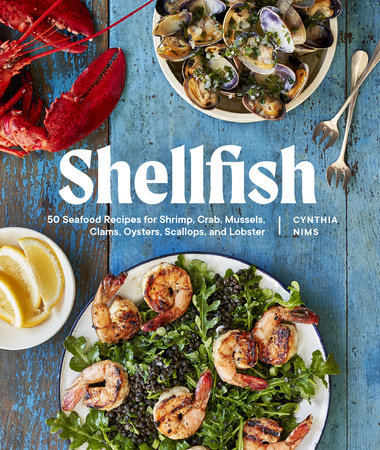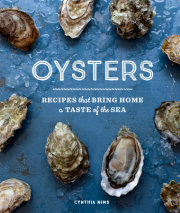IntroductionAt a cookbook signing years ago, a gentleman walked up to my table, glanced at the cover of my book, and said, more or less, “Why would anyone need a crab cookbook? All you have to do is steam it and eat it!” I don’t recall how I responded in that moment, but I’ve thought often about that remark and how—at a basic level—he was absolutely right. When shellfish is at its best, the less you do, the better. Steam, grill, or pan-fry with minimal accoutrements, and you’ve got an unparalleled feast.
So why did I sit down to write this book, knowing that to be true? For the simple fact that we’re not all lucky enough to have the comfort level with shellfish to simply wing it when the opportunity presents itself. In light of that, this book covers some basics of sourcing and handling seven types of shellfish, and a selection of recipes to showcase each with a range of techniques and ingredients. Plus, I’m certain that even those who have an abundance of fresh-from-the-water shellfish to cook like to change things up now and again. You know what they say about variety.
I’m a lifelong Northwesterner who was fortunate to land a great magazine editing gig right out of culinary school. By the time my stint at
Simply Seafood magazine was done, I had traveled to Kodiak Island in Alaska; Veracruz, Mexico; and Hawaii—among other fabulous destinations—for stories about outstanding seafood. I also interacted with an array of inspiring seafood experts, including many amazing chefs. I ate it all up, literally and figuratively.
In the years since that job, I’ve had countless shellfish adventures large and small, close to home and far afield—from slurping oysters on a Puget Sound beach late-night in midwinter, to procuring littleneck clams at the source while on Virginia’s Eastern Shore, to enjoying enormous shrimp and gooseneck barnacles at a sixty-plus-year-old restaurant in Lisbon. I’ve eaten so very many great meals, both dining out and home-cooked, featuring outstanding shellfish. It has all contributed to perspectives about, and an enduring enthusiasm for, cooking shellfish that I’ll be sharing with you here. Of my many thoughts about shellfish, three themes rise to the top.
First, with each bite, we have a chance to appreciate just how distinctly delicious each type of shellfish is. Exploring the range of flavors and forms among the shellfish clan is a worthy pursuit. In our kitchens, this can mean branching out from the shellfish we’re most familiar with to try new things. Venture to ask about selections you’re not familiar with at the seafood counter and give them a try. If you’ve only tried a favorite shellfish fried in the past, give it a go grilled next time. When traveling, order a different type of shellfish you don’t see at home, for both the pleasure of trying something new and adding another layer of local experience to the trip.
Second, the options for cooking (or not cooking, as the case may be) shellfish are seemingly endless. Shellfish can be dressed up or served casually, they work with most any cooking technique, they can be in-shell or not, they can be perfect for a weeknight supper or for a special occasion. With basic building blocks of cooking technique and familiarity with handling different types of shellfish, your shellfish repertoire will know no bounds.
Third, and I think most importantly, shellfish are naturally evocative creatures. From the way they look to how and where they grow to regions and cultures where they’ve been rooted for many generations, they are undeniably delicious little storytellers. We benefit from taking a moment to consider that story. It can be simply a matter of going from generic “clams” or “shrimp” to learning of different species and where they come from, maybe how they were caught or raised. I contend that a little backstory can make the dining experience more delectable, more memorable, richer.
While “family” has a specific taxonomic meaning in the scientific world, for the purposes of this book, I think of each chapter as a family of shellfish. The shellfish covered here fall into two groups: crustaceans (crab, shrimp, and lobster) and bivalves (clams, mussels, oysters, and scallops).
Within these chapters, I focus on shellfish species that I expect are likely to be available to most readers across the United States. Some others that you might come across—either occasionally in a specialty store or in narrower regional availability—will get a brief nod. I also offer shopping and storing tips, general cooking approaches, and a handful of recipes to exemplify some of that shellfish’s delicious and varied possibilities.
Each of these families are worthy of their own spotlight, and there are books that showcase them individually. Including a couple of my own: one about oysters, another featuring crab. This collection covers more shellfish in smaller bites to fuel the general enjoyment of cooking shellfish at home and a broad appreciation for shellfish overall.
Copyright © 2022 by Cynthia Nims. All rights reserved. No part of this excerpt may be reproduced or reprinted without permission in writing from the publisher.









